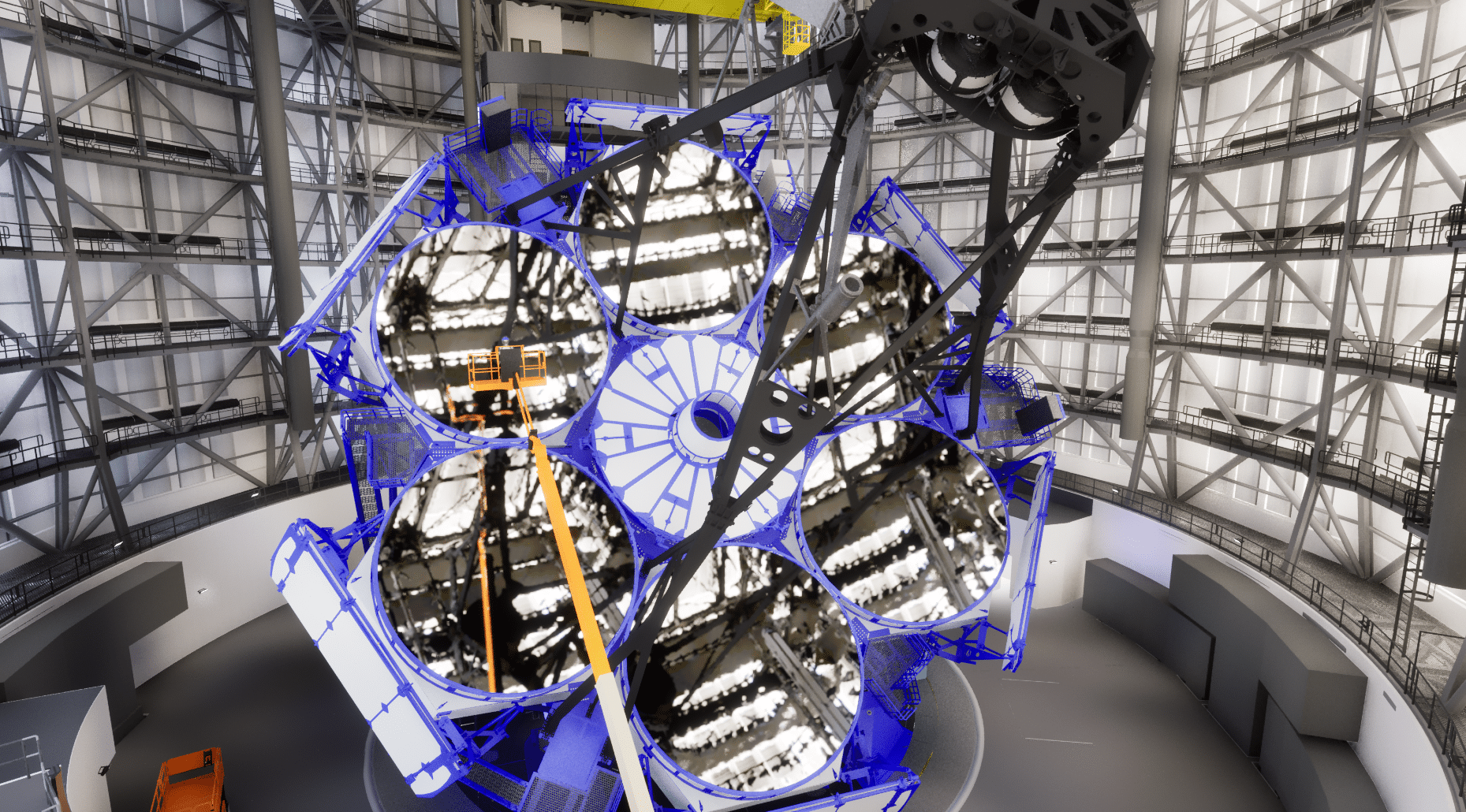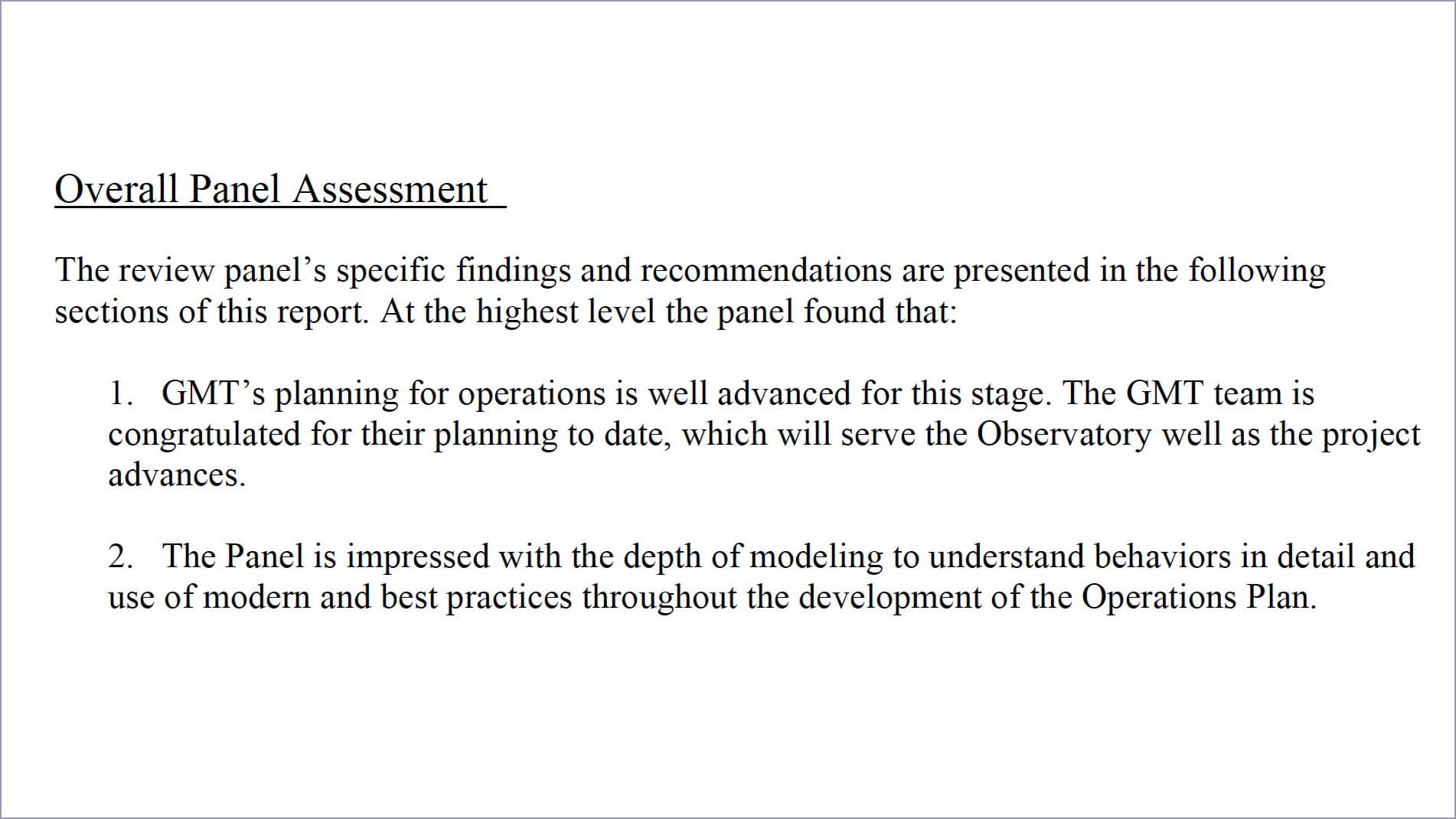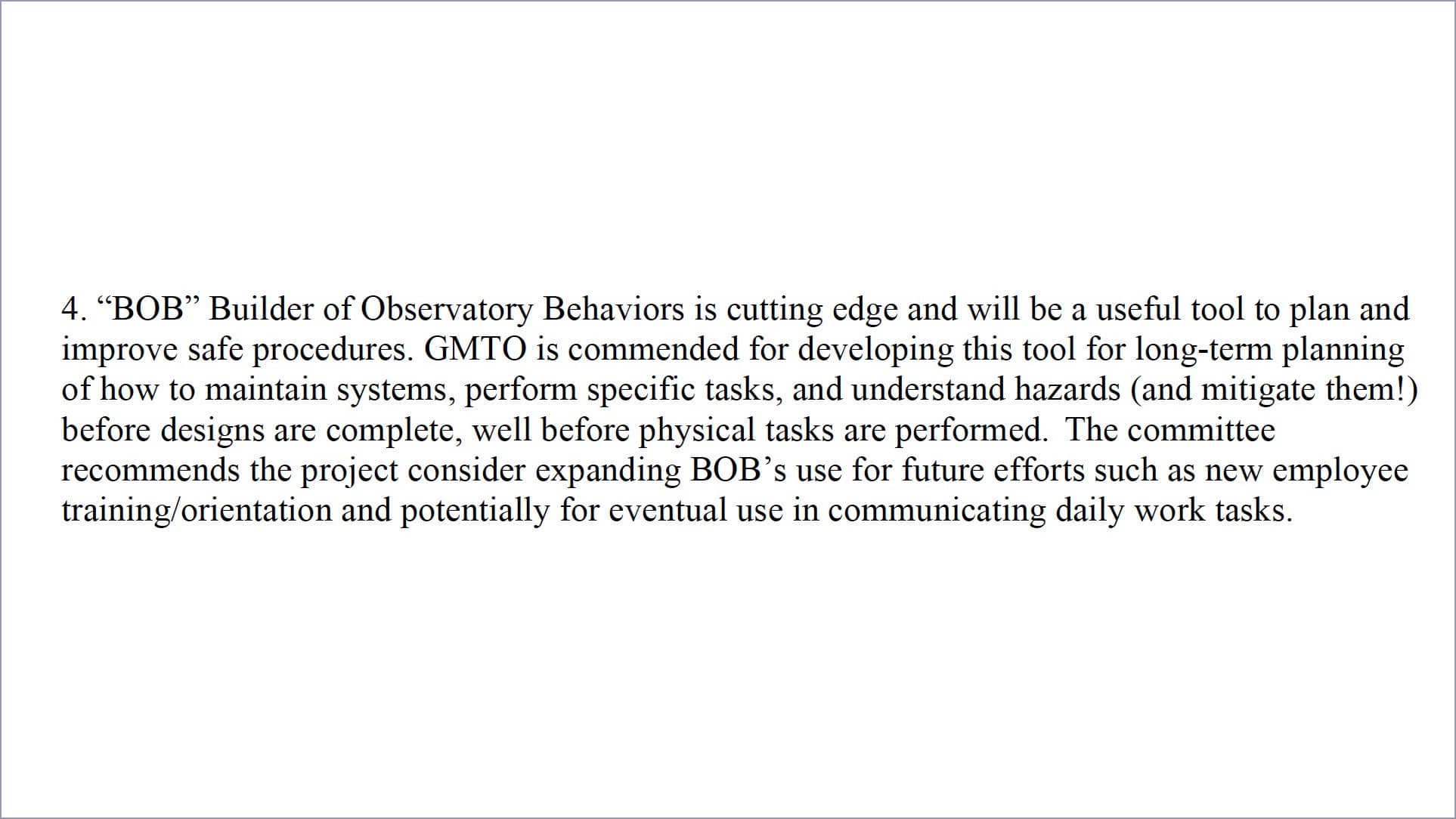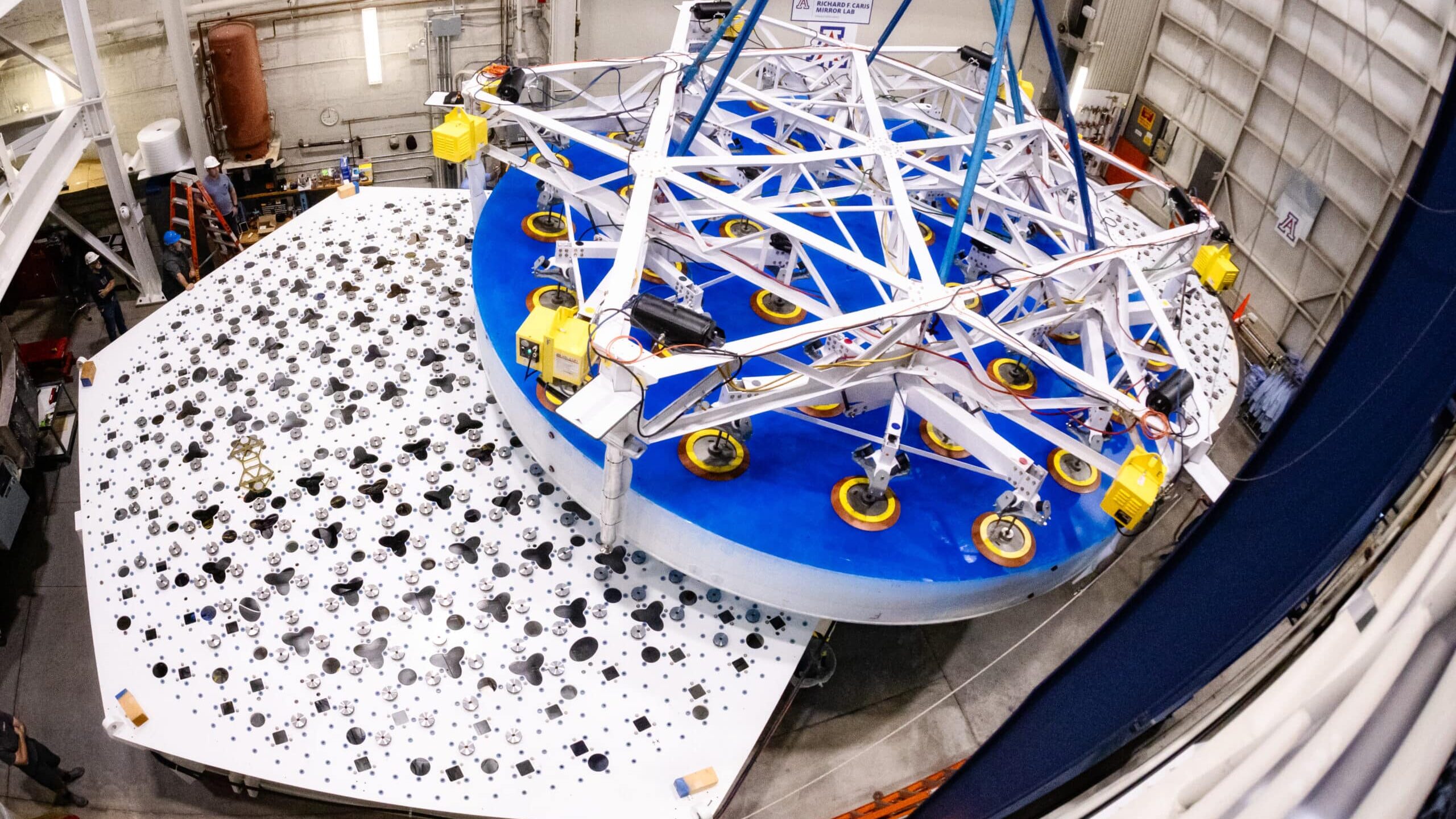A Look Inside the Future Operations of the Giant Magellan Telescope

Gaming engines power simulated safety and maintenance procedures for keeping the world’s largest mirrors in perfect condition.
This spring, the Giant Magellan Telescope cleared a major milestone on the path to daily operations and nightly observing: A successful external review of its Operations Plan. The plan is a blueprint for how the observatory will function once construction is complete in the 2030s. It outlines what systems and procedures are required to support the telescope’s core functions, how the telescope and its facilities will be maintained, and who will operate the telescope during both day and night. Most importantly, it shows how the international consortium behind the Giant Magellan Telescope will be ready for it to deliver groundbreaking science from day one.
The external Operations Plan review was conducted by a panel of leading experts that operate some of the most sophisticated observatories around the world, including the European Southern Observatory, Large Binocular Telescope Observatory, LIGO Laboratory, National Radio Astronomy Observatory, National Solar Observatory, the National Science Foundation’s NOIRLab, Vera C. Rubin Observatory, and the W. M. Keck Observatory.
The external review panel evaluated the project’s approach to transitioning the observatory from construction to operations and confirmed that the Giant Magellan Telescope is on a path to success and well on track for the future.

The external review panel particularly commended the maturity of the Operations Plan, use of modern best practices, and the team’s depth of modeling to simulate behaviors and operational demands. The panel’s assessment reinforced confidence in the project’s readiness and its ability to transition effectively through the construction phase and into operations.
For William Burgett, Project Manager for the Giant Magellan Telescope, the outcome reflects years of thoughtful planning. “We’ve spent the last year preparing for this review, and the result confirms that our team has developed a well-founded, mature approach to operating this complex observatory. We’re not just building a telescope — we’re preparing to run it successfully for decades.”
Simulating Operations with Virtual Tools: Say Hello to BOB
“BOB,” the Builder of Observatory Behaviors — an interactive 3D simulation used to model and test the Giant Magellan Telescope’s real-world operations.
One of our most forward-looking tools featured in the Operations Plan exists entirely in simulation. Engineers call it “BOB,” or Builder of Observatory Behaviors. The tool was developed to model how people and handling equipment will move and work throughout the enclosure and its many support facilities. BOB’s software foundation uses Unreal Engine (the same software platform behind many popular video games) to create a high-fidelity, interactive 3D environment that replicates the observatory.
“It’s a first-person look at how the telescope will function,” explains Christopher Madden, Principal Mechanical Engineer for the Giant Magellan Telescope’s Site, Enclosure & Facilities Group. “You can walk through the telescope mount, ride the lift, move the mirror segments, and more. It lets us practice complicated or high-risk activities in a digital environment, so we can make better decisions in the real one.”
While traditional CAD models are critical for design, they’re less intuitive for training or operations planning. That’s where the simulation comes in. “This tool is especially useful for people who don’t live in the CAD world. It gives everyone — from engineers to future operations staff — a shared way to visualize procedures and think critically about sequencing, safety, and efficiency,” shares Madden.
Recently, the tool was used to test and demonstrate several key workflows, including how the mirror segments are transferred within the facility. Future uses may include remote collaboration, interactive staff training, or even refining certain aspects of construction.
This type of virtual modeling is exactly what the review panel highlighted as a strength of the Giant Magellan Telescope’s operations planning — a thoughtful, modern approach that equips the team to evolve the plan as the telescope nears completion.
Preparing for the Day-to-Day Operations

As complex as the telescope is, its success will rely on something familiar: people working together, making smart decisions, and solving problems in real time. That collaborative work environment is what the simulation tool and Operations Plan are designed to support.
From mirror cleaning and instrument swaps to emergency protocols and staffing structures, the observatory’s day-to-day life is being mapped out long before first light. The team is thinking through every phase — from the arrival of the first operations crew to the moment astronomers begin collecting data from a newly discovered exoplanet.
“We’re building the tools, the plans, and the teams that will make the Giant Magellan Telescope’s science possible from day one,” says Burgett. The future of astronomy starts long before first light.
For construction progress updates on the Giant Magellan Telescope directly from our scientists and engineers, subscribe to our Milestones Newsletter.



